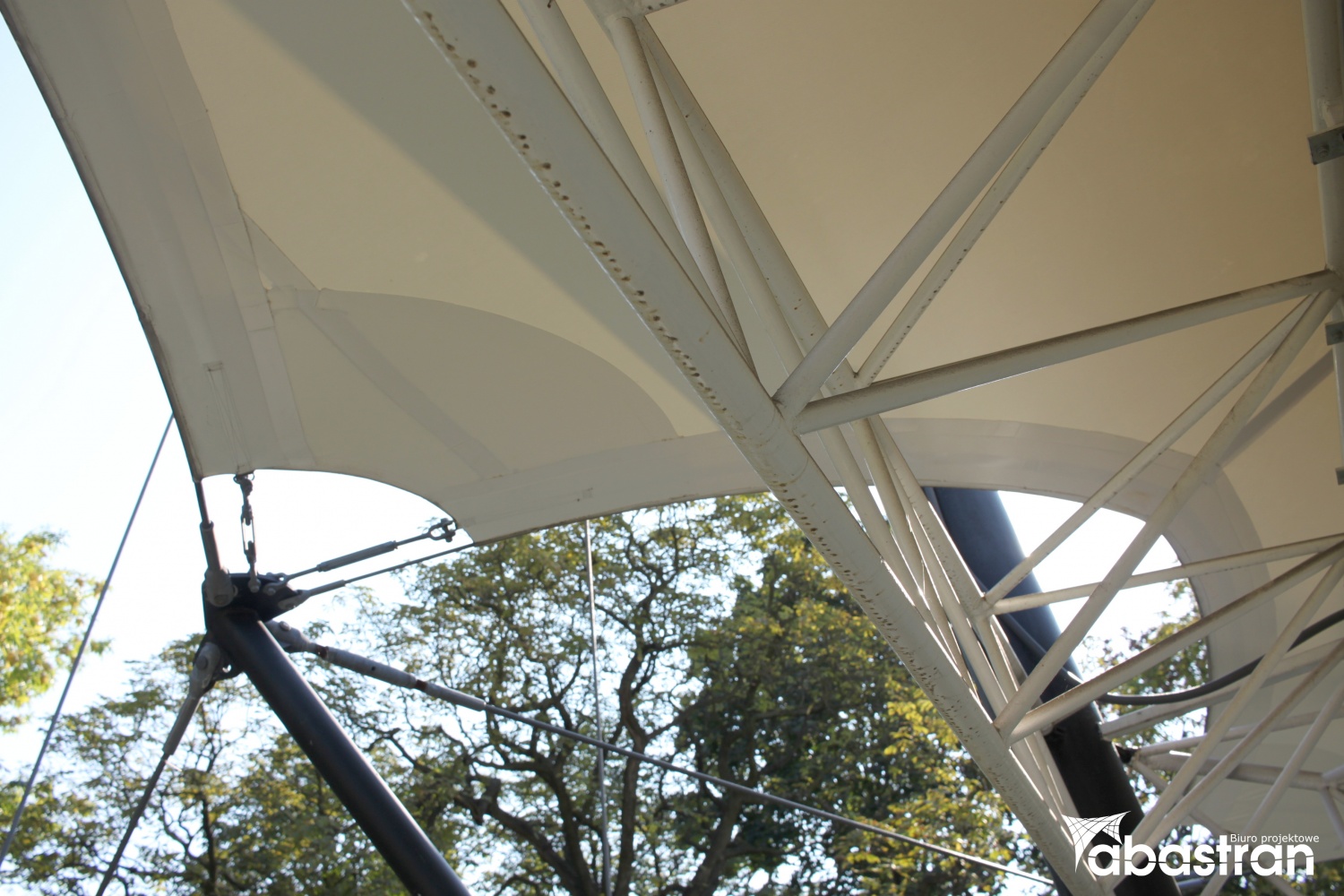
Steel Structure – What is it and Where is it Used?
Steel structures form the foundation of modern industrial and commercial construction. The growing popularity of steel construction stems from its durability, flexibility, and speed of assembly. Steel, with its unique properties, is used in various types of buildings, from steel halls to industrial and infrastructure facilities. In this article, we will discuss what a steel structure is, its advantages and disadvantages, and where it is applied.
What is a Steel Structure?
A steel structure is a load-bearing system made of steel components, such as steel frames and profiles. They form the basis for many large structures, such as warehouses, canopies, and industrial buildings. Steel is an ideal material for such structures because it combines the strength of steel with design flexibility.
Depending on the needs, we distinguish between different types of steel structures:
- Frame Structures – most commonly used in the construction of halls and warehouses, consisting of load-bearing frames and connecting elements.
- Solid-Wall Structures – more compact, often used in the construction of bridges and other engineering structures.
Steel structure elements, such as beams, columns, and joints, can be prefabricated and quickly assembled on-site, significantly reducing project completion time.
Advantages of Steel Structures
Strength and Durability of Steel Structures
One of the main advantages of steel structures is their high strength. Steel can withstand large loads and is resistant to changing weather conditions, making it an ideal material for constructing steel halls and industrial facilities. Structural steel used in such projects exhibits exceptional corrosion resistance, especially when subjected to additional protection, such as galvanization.
Lightness of the Structure and Design Flexibility
The lightness of steel structures compared to concrete or wooden structures makes them easy to transport and assemble. The assembly of steel structures is quick and precise, shortening the construction time. Thanks to the flexibility of steel, designers can create both simple warehouses and complex buildings with unconventional architectural forms.
Sustainable Construction and Recycling
Steel is a fully recyclable material, making it an excellent choice in the context of sustainable construction. Using steel helps reduce the consumption of natural resources and minimizes negative environmental impacts. Additionally, steel can be recycled multiple times without losing its properties, further enhancing its ecological value.
Disadvantages of Steel Structures
Initial Costs and Specialized Labor
Although steel structures offer many advantages, their construction can involve higher initial costs, especially when considering additional elements like corrosion protection. Specialized labor is often needed for the assembly of steel structures, which can increase project costs.
Thermal and Acoustic Insulation
Steel, as a conductive material, requires additional insulation to meet energy standards. Similarly, for buildings requiring good acoustic insulation, steel structures may need additional insulating solutions.
Where are Steel Structures Used?
Steel structures find application in many industries, from machine manufacturing to commercial construction. Here are some examples:
Steel Halls and Steel Warehouses
Industrial facilities such as steel halls and warehouses are among the most common structures built using steel construction. Steel structure elements are ideal for creating large, open spaces that can accommodate warehouses, distribution centers, or production plants.
Industrial and Energy Facilities
In industry, steel plays a key role in the construction of industrial facilities and infrastructure related to the energy sector. Steel structures are used in power plants, processing plants, and many other industries that require solid, durable constructions.
Steel Canopies and Other Structures
Steel canopies are another example of the application of steel structures. They are used as lightweight coverings for parking lots, in agriculture, or in logistics. Due to their durability and resistance to weather conditions, steel canopies provide a reliable and economical solution.
The Process of Designing and Producing Steel Structures
The process of executing a steel structure project consists of several stages:
- Designing Steel Structures – engineers develop a detailed plan, considering technical, strength, and aesthetic requirements.
- Material Selection – choosing the right type of steel, depending on its application (e.g., carbon steel, stainless steel, or galvanized steel).
- Assembly of Steel Structures – prefabricated elements, such as steel frames and profiles, are transported to the construction site and joined into a complete structure.
Summary
Steel structures offer exceptional strength, flexibility, and durability, making them widely used in industrial and commercial construction. From steel halls to steel warehouses and canopies, steel is a versatile material that performs well in various industries, including energy and machinery. If you are looking for reliable solutions in steel structures, contact Abastran – experts in this field.
👉 Contact us for a quote on your project!

Advertising Tents as an Investment – How to Increase Brand Recognition at Events?


Competition for Innovative Membrane Roofing – Results and Inspirations
This year, we had the pleasure of organizing a competition together with the Faculty of Architecture at the Silesian University of Technology for 6th-semester students to design innovative membrane roofing. The award ceremony, held at the Faculty of Architecture in Gliwice, was the culmination of the young designers’ creative and technical journey.








